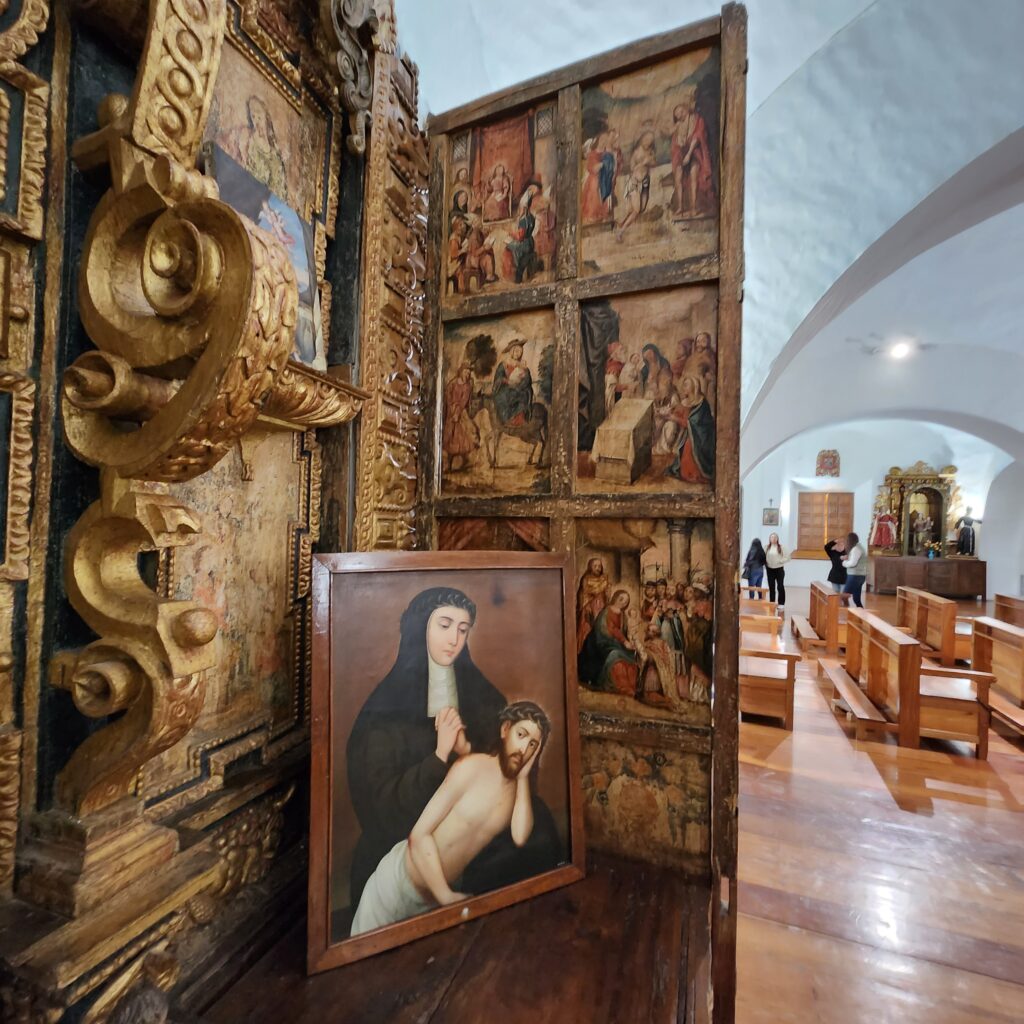El monasterio fue fundado en dos ocasiones en el mismo predio: la primera en la madrugada del 18 de mayo de 1596, y la segunda -ya con carácter canonical y oficial- el 19 de noviembre de ese mismo año. Ubicado en el costado occidental de la plazuela conocida en ese entonces como de Alonso Cazco (vecino del lugar) y luego llamada de Santa Clara, la edificación de su fábrica definitiva se debió a un hecho casual, pues la primitiva capilla localizada en el lado noroccidental del cenobio fue robada (19-11644); pero en vista de que se recuperó lo sustraído (tabernáculo y copón con las «formas sagradas») los fieles motivados por el hallazgo, al que calificaron de milagroso, estuvieron prestos a auspiciar la construcción de una nueva iglesia; este aporte económico fue la base que sirvió para levantar los edificios que forman el enorme conjunto monacal, de acuerdo al diseño y dirección del alarife franciscano Antonio Rodríguez (1650-1695).
La segunda construcción, a partir de 1596 y en el siglo XVII, es la que hasta ahora existe y constituye el Monasterio femenino más grande de la ciudad y con una gran riqueza arquitectónica, escultórica y pictórica.

The monastery was founded twice on the same property: the first in the early hours of May 18, 1596, and the second—already with canonical and official status—on November 19 of that same year. Located on the western side of the small square then known as Alonso Cazco (a local resident) and later called Santa Clara, the construction of its definitive structure was due to a chance event, as the original chapel located on the northwestern side of the monastery was robbed (1594-1644); however, since the stolen goods (the tabernacle and the ciborium containing the «sacred forms») were recovered, the faithful, motivated by the discovery, which they described as miraculous, were quick to sponsor the construction of a new church. This financial contribution was the basis for the construction of the buildings that make up the enormous monastic complex, designed and directed by Franciscan master builder Antonio Rodríguez (1650-1695).
The second construction, beginning in 1596 and continuing into the 17th century, is the one that still exists today and constitutes the largest female monastery in the city, boasting a wealth of architecture, sculpture, and painting.
